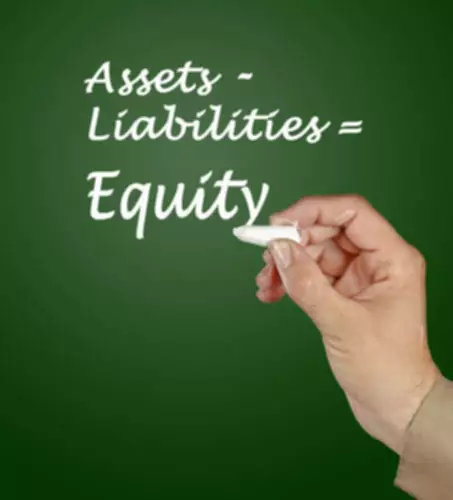Content
- 1 Overview of equity method investments
- Subscribe to The CPA Journal’s Free Newsletter
- How do you determine if the equity method is applicable?
- What are the Other Possible Accounting Methods?
- Handbook: Equity method of accounting
- What is the Equity Method?
- Purposes of the equity method of accounting for investments
- Tax Considerations

Unless evidence is present that significant influence does not exist, the equity method is applied by the investor to report all investments in this 20–50 percent range of ownership. The FASB has made sweeping changes in the last two decades to the accounting for investments in consolidated subsidiaries and equity securities. However, it has left the accounting for equity method investments largely unchanged since the Accounting Principles Board released APB 18 in 1971. In instances where the investor owns less than 20% of an entity, the guidance requires demonstration of actively influencing the financial and operating policies of the investee to apply the equity method. The investor can demonstrate active influence by some of the examples presented above, but the above list is not all-inclusive.

Founded in 1993 by brothers Tom and David Gardner, The Motley Fool helps millions of people attain financial freedom through our website, podcasts, books, newspaper column, radio show, and premium investing services. This content outlines initial considerations meriting further consultation with life sciences organizations, healthcare organizations, clinicians, and legal advisors to explore feasibility and risks. These materials were downloaded from PwC’s Viewpoint (viewpoint.pwc.com) under license.
1 Overview of equity method investments
If the investor has made adjustments to OCI for the equity investment, the accumulated balance, or accumulated OCI (AOCI), the investment must also be reduced for the disposed portion of the investment. If only a portion of the investment is being disposed of, the AOCI related to the equity investment is reduced by the same percentage. Equity investments are also decreased due to other-than-temporary impairments. If the investee experiences a series of losses, it may be indicative of an impairment loss.
- If, however, the investor has less than 20% of the investee’s shares but still has a significant influence in its operations, then the investor must still use the equity method and not the cost method.
- Entity A holds 20% interest in Entity B with carrying amount of $100m and accounts for it using the equity method.
- When an investor exercises full control over the company it invests in, the investing company may be known as a parent company to the investee.
- So, the company is most likely classifying this investment as “Equity Securities,” which means that Realized and Unrealized Gains and Losses show up on the Income Statement.
- For example, if Macy’s owned 65% of Saks, it would report the entire $100 million in profit, then include an entry labeled “minority interest” that deducted the $35 million (35%) of the profits it didn’t own.
- The investor’s proportionate share of the investee’s AOCI is written off against the remaining carrying value, also contributing to the calculation of the carrying amount of the “new” asset.
- Additionally, Entity A reverses the consolidation entry made in year 20X0 (see above) and includes the profit that B made on sale to A.
In-depth analysis, examples and insights to give you an advantage in understanding the requirements and implications of financial reporting issues. George must eliminate any gross profit recognized on sold inventory that still remains in Greg’s possession. Thus the elimination would be calculated as $100K x 50% remaining in inventory x 40% GP margin.
Subscribe to The CPA Journal’s Free Newsletter
In such a case, investments made by the parent company in the subsidiary are accounted for using the consolidation method. Lion receives dividends of $15,000, which is 30% of $50,000 and records a reduction in their investment account. The reason for this is that they have received money from their investee.

So, the company is most likely classifying this investment as “Equity Securities,” which means that Realized and Unrealized Gains and Losses show up on the Income Statement. But if Parent Co. decreases its stake in Sub Co., there will almost always be a Realized Gain or Loss to record. In Year 1, Parent Co. owns no stake in Sub Co., and at the end of Year 2, it acquires a 30% stake in Sub Co., when Sub Co.’s Market Cap is $100 million. Significant influence is defined as an ability to exert power over another company. This power includes representation on the board of directors, involvement in policy development, and the interchanging of managerial personnel.
How do you determine if the equity method is applicable?
Parent Co. would record a change only if it sold some of its stake in Sub Co., resulting in a Realized Gain or Loss. However, it can come up, especially if you’re in an industry or region where joint ventures and partnerships are common, or if you have more work experience. That’s a separate and more complicated topic, so we’re going to focus on just the equity method here.
Unfortunately, the precise point at which one company gains that ability is impossible to ascertain. Although certain clues such as membership on the board of directors and the comparative size of other ownership interests can be helpful, the degree of influence is a nebulous criterion. When a https://www.bookstime.com/articles/equity-method-of-accounting question arises as to whether the ability to apply significant influence exists, the percentage of ownership can be used to provide an arbitrary standard. Parent must use the equity method to account for its investment in Son because it has the ability to exert significant influence over Son.
What are the Other Possible Accounting Methods?
In summary, 20% ownership is only an indicator that significant influence over financial and operating policies of another entity may exist. Investees reflect the DTAs and DTLs resulting from temporary differences between the carrying amounts of their pre-tax assets and liabilities and their tax bases in their financial statements. Therefore, they make all their DTA and DTL adjustments for inside basis differences before publishing their financial statements. An investor has significant influence but not control of the investee if the investor holds between 20% and 50% of the voting common stock of an investee, and it does not exercise any control on the subsidiary. FASB considers a significant influence criterion based on the ownership of outstanding securities whose holders possess voting privileges.
What is the equity method of IFRS 28?
Under the equity method, on initial recognition the investment in an associate or a joint venture is recognised at cost, and the carrying amount is increased or decreased to recognise the investor's share of the profit or loss of the investee after the date of acquisition.
The balance in this investment account rises when the investee reports income but then falls (by $12,000 or 40 percent of the total distribution of $30,000) when that income is later passed through to the stockholders. GAAP, unless signs of significant influence are present, an investor owning less than 20 percent of the outstanding shares of another company reports the investment as either a trading security or available-for-sale security. In contrast, an investor holding 20 percent or more but less than or equal to 50 percent of the shares of another company is assumed to possess the ability to exert significant influence.
Handbook: Equity method of accounting
If the investing entity has enough control over the investee to consolidate under ASC 810 Consolidation, the investor consolidates the investee as a subsidiary of the investor, and ASC 323 would not apply. Generally, ownership of 50% or more of an entity indicates control, but entities must use significant judgment and additional criteria before making the final ownership determination. This article will cover when and how to apply the equity method to account for certain investments. To further demonstrate the equity method of accounting, we will also provide examples of some of the more common accounting transactions that apply to an equity investment. This list, however, is not all-inclusive, and companies should consider all relevant facts and circumstances. SEC Professional Fellow Paul Kepple, at the 1999 Annual National AICPA Conference on Current SEC Developments, commented that the starting point to evaluate a significant influence is the investor’s common stock ownership in the investee.

If the investee is not timely in forwarding its financial results to the investor, then the investor can calculate its share of the investee’s income from the most recent financial information it obtains. If there is a time lag in receiving this information, then the investor should use the same time lag in reporting investee results in the future, in order to be consistent. Alternatively, when an investor does not exercise full control over the investee, and has no influence over the investee, the investor possesses a passive minority interest in the investee.
What is the Equity Method?
Each of the participating members have an equal or near equal share of the entity, so no one company has control over the entity at the formation of the joint venture. However each is able to significantly influence the financial and operational policies of the entity. In this scenario, the partners will account for their investment in the joint venture as an equity method investment. In the statement of cash flows, the initial investment is recognized as investing cash outflows.
A firm that owns less than 20%, but still exerts a lot of control, would need to use the equity method. Additionally, Entity A reverses the consolidation entry made in year 20X0 (see above) and includes the profit that B made on sale to A. PwC refers to the US member firm or one of its subsidiaries or affiliates, and may sometimes refer to the PwC network. This content is for general information purposes only, and should not be used as a substitute for consultation with professional advisors. A joint venture is a business arrangement between two or more companies to combine resources to accomplish an agreed upon goal.